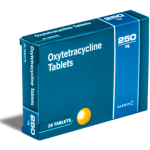
Oxytetracycline is administered by IM injection. IM oxytetracycline should be reserved for situations in which oral therapy is not feasible; patients receiving the drug should be switched to an oral anti-infective as soon as possible.
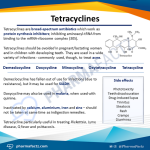
Tetracyclines, in appropriate dosage forms, are administered orally, IV, or by deep IM injection. IV or IM administration should be used only when the oral route is not feasible, and oral therapy should replace parenteral therapy as soon as possible. IM administration of tetracyclines is rarely indicated because this route of administration is painful and, in the usual dosage, produces lower serum concentrations than does oral administration. If the drugs are given IV, the risk of thrombophlebitis should be considered.
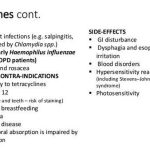
The most frequent adverse reactions to tetracyclines are dose-related GI effects including nausea, vomiting, diarrhea, bulky loose stools, anorexia, flatulence, abdominal discomfort, and epigastric burning and distress. Stomatitis, glossitis, dysphagia, sore throat, hoarseness, black hairy tongue, pancreatitis, and inflammatory lesions in the anogenital region with candidal overgrowth have also been reported occasionally.
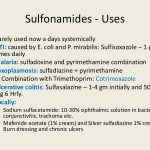
Sulfisoxazole and its derivatives share the actions and uses of the sulfonamides. The relative solubility of the drug in alkaline and slightly acidic urine makes the drug particularly useful for the treatment of urinary tract infections. A combination product containing sulfisoxazole acetyl and erythromycin ethylsuccinate is commercially available for the treatment of acute otitis media caused by susceptible strains of Haemophilus influenzae in children and is usually active against ampicillin-resistant strains of the organism.
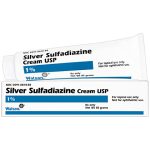
Sulfadiazine is administered orally. Patients should be instructed to drink one full glass (250 mL) of water with each dose of the drug and at frequent intervals throughout the day while they are receiving sulfadiazine. The usual adult dosage of sulfadiazine is 2-4 g initially, followed by 2-4 g daily administered in 3-6 equally divided doses.